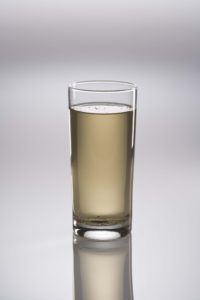I drink a lot of water. I learned when I was in my 20’s that drinking eight ounces of water per day was important to good health. In my early 30’s, while pursuing my 2nd career in nutrition, I learned that drinking at least half your body weight in ounces of water per day was critical to a good metabolism and optimal detoxification. Over the years, I have encouraged all my clients to drink plenty of water. After all, we cannot survive very long without water!
But what if our water is polluted and the heavy metals and chemicals in our water are making us sick? The high amounts of lead found in the water supply of Flint, Michigan is an extreme and tragic example. Your water supply may have levels of heavy metals and chemicals that have not yet raised alarm bells but are not safe or healthy for you. These heavy metals and chemicals can then hang out in your body over a long period of time and make you sick slowly but surely, robbing you of your health and vitality and causing chronic illness.
I recently attended an environmental medicine conference in Portland, Oregon where an entire hour was dedicated to harmful chemicals and heavy metals found in water and how to pick a good water filtration system to make sure you are not drinking in these toxins. There was a lot to absorb! To remove the overwhelm and keep it simple, I included some key take aways and resources from this lecture to get you started on making sure you are drinking clean water!
Is your water safe?
The EPA has established primary drinking water regulations for about 100 of the many thousands of known contaminants that appear in tap water. The EPA has not adopted a single new standard for regulating chemicals in drinking water since 1996.
A 2015 review showed that there were 80,834 reported violations of the Safe Drinking Water Act at 18,094 community water systems across the nation. Nearly 9 out of 10 violations were subject to no formal action by the state or the EPA.
How do I find out what is in my tap water?
Environmental Working Group tap water analysis:
https://www.ewg.org/tapwater/#.WcGynEyZOYU
Key heavy metals and chemicals to look out for and/or test in your water supply:
- Heavy metals: Arsenic, lead, mercury and hexavalent chromium
- Flouride
- Disinfectants like chlorine, chloramine, and disinfection by products like trihalomethanes
- Perfluorooctanoic acid (PFOA): used in a variety of consumer products. Extremely high persistence in the environment and the human body.
- MTBE – a gasoline additive used as an oxygenate and to raise the octane number.
- Volatile organic compounds (VOCs) like benzene toluene, and hexane
- Pesticides
Why does it matter if these contaminants are in my water?
Over time, these heavy metals and chemicals build up in our bodies and cause toxicity to our brain, nerves, immune system, reproductive system, blood vessels, liver, kidneys and affect our hormones and energy production. For example, volatile organic compounds like benzene, toluene, xylene, and hexane found in drinking water in much of the USA can affect your nervous system and cause learning, memory, and mood problems, as well as fatigue, headaches, and insomnia.
Water filtration systems:
Reverse osmosis: This process pushes tap water through a semipermeable membrane that blocks particles larger than water molecules.
Pros: Effective at removing many contaminants including arsenic, fluoride, hexavalent chromium, nitrates and perchlorate.
Cons: Does not remove chlorine, chloramine, radioactive gases, THM or other VOCs.
**Many RO systems also include an activated carbon component than can remove additional
contaminants from your water like the ones listed above.
Wastes a lot of water – three to twenty times more water than they produce.
Carbon Filtration:
Coconut shell based micro pores are cleaner & best for wide variety of chemicals
.5 micron catalytic coconut-based carbon block is optimal
*Chloramine removal requires catalytic-grade carbon
Please refer to this awesome hand out provided by Dr. Tina Beaudoin and Dr. Anne Marie Fine for good vetting questions to ask water filtration system manufacturers for point of use filtration devices and filtration devices for whole house filters. This hand out also includes great resources to test your water! >>Handout<<
Two water filtration systems that I recommend:
Pure Effect Filters: https://www.pureeffectfilters.com
Berkey Water: http://berkeywater.com *Must add on a fluoride and arsenic reduction element.
Wherever you start, some filtration is better than none! Find out from the resources provided here what contaminants are most prominent in your water and then choose a water filter system within your budget that best removes the contaminants found in your water. A little time and investment on your part, but definitely well worth it! After all, you have to drink water to live and clean water really does support optimal health and vitality! Protect yourself now; don’t rely on the federal government or your state to do it for you!

